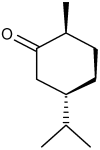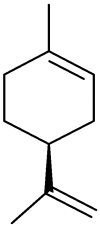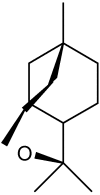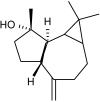The artemisia L. Genus: a review of bioactive essential oils
- PMID: 22388966
- PMCID: PMC6268508
- DOI: 10.3390/molecules17032542
The artemisia L. Genus: a review of bioactive essential oils
Abstract
Numerous members of the Anthemideae tribe are important as cut flowers and ornamental crops, as well as being medicinal and aromatic plants, many of which produce essential oils used in folk and modern medicine and in the cosmetics and pharmaceutical industry. Essential oils generally have a broad spectrum of bioactivity, owing to the presence of several active ingredients that work through various modes of action. Due to their mode of extraction, mostly by distillation from aromatic plants, they contain a variety of volatile molecules such as terpenes, phenol-derived aromatic and aliphatic components. The large genus Artemisia L., from the tribe Anthemideae, comprises important medicinal plants which are currently the subject of phytochemical attention due to their biological and chemical diversity. Artemisia species, widespread throughout the world, are one of the most popular plants in Chinese traditional preparations and are frequently used for the treatment of diseases such as malaria, hepatitis, cancer, inflammation and infections by fungi, bacteria and viruses. Extensive studies of the chemical components of Artemisia have led to the identification of many compounds as well as essentials oils. This review summarizes some of the main reports on the chemistry and anti-infective activities of Artemisia. Li. essential oils from the data in the recent literature (2000-2011).
Figures










Similar articles
-
Volatile-oils composition, and bioactivity of the essential oils of Plectranthus barbatus, P. neochilus, and P. ornatus grown in Portugal.Chem Biodivers. 2014 May;11(5):719-32. doi: 10.1002/cbdv.201300161. Chem Biodivers. 2014. PMID: 24827682
-
Essential oils from wild populations of Algerian Lavandula stoechas L.: composition, chemical variability, and in vitro biological properties.Chem Biodivers. 2011 May;8(5):937-53. doi: 10.1002/cbdv.201000301. Chem Biodivers. 2011. PMID: 21560242
-
Chemical composition and bioactivity of essential oils and Ethanolic extracts of Ocimum basilicum L. and Thymus algeriensis Boiss. & Reut. from the Algerian Saharan Atlas.BMC Complement Altern Med. 2019 Jun 21;19(1):146. doi: 10.1186/s12906-019-2556-y. BMC Complement Altern Med. 2019. PMID: 31227024 Free PMC article.
-
Towards a better understanding of Artemisia vulgaris: Botany, phytochemistry, pharmacological and biotechnological potential.Food Res Int. 2018 Jul;109:403-415. doi: 10.1016/j.foodres.2018.03.072. Epub 2018 Mar 29. Food Res Int. 2018. PMID: 29803465 Review.
-
Matricaria genus as a source of antimicrobial agents: From farm to pharmacy and food applications.Microbiol Res. 2018 Oct;215:76-88. doi: 10.1016/j.micres.2018.06.010. Epub 2018 Jun 25. Microbiol Res. 2018. PMID: 30172312 Review.
Cited by
-
Essential Oil and Smoke Components of Artemisia absinthium and Hagenia abyssinica.Int J Food Sci. 2024 May 23;2024:9949040. doi: 10.1155/2024/9949040. eCollection 2024. Int J Food Sci. 2024. PMID: 38938551 Free PMC article.
-
Chemical Composition and Cytotoxicity Evaluation of Artemisia judaica L. Essential Oil from Saudi Arabia.Molecules. 2024 Jun 18;29(12):2882. doi: 10.3390/molecules29122882. Molecules. 2024. PMID: 38930948 Free PMC article.
-
Comparative and phylogenetic analysis of the complete chloroplast genomes of 10 Artemisia selengensis resources based on high-throughput sequencing.BMC Genomics. 2024 Jun 5;25(1):561. doi: 10.1186/s12864-024-10455-3. BMC Genomics. 2024. PMID: 38840044 Free PMC article.
-
Phytochemical Analysis, Antimicrobial Screening and In Vitro Pharmacological Activity of Artemisia vestita Leaf Extract.Molecules. 2024 Apr 17;29(8):1829. doi: 10.3390/molecules29081829. Molecules. 2024. PMID: 38675649 Free PMC article.
-
The Essential Oil Compositions of Ambrosia acanthicarpa Hook., Artemisia ludoviciana Nutt., and Gutierrezia sarothrae (Pursh) Britton & Rusby (Asteraceae) from the Owyhee Mountains of Idaho.Molecules. 2024 Mar 20;29(6):1383. doi: 10.3390/molecules29061383. Molecules. 2024. PMID: 38543021 Free PMC article.
References
-
- Teixeira da Silva J.A. Mining the essential oils of the Anthemideae. Afr. J. Biotechnol. 2004;3:706–720.
-
- Gruenwald J. PDR for Herbal Medicines. Montvale; Montvale, NJ, USA: 2000.
Publication types
MeSH terms
Substances
LinkOut - more resources
Full Text Sources


